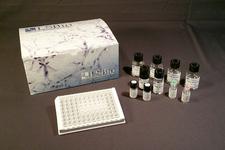order histories, retained contact details for faster checkout, review submissions, and special promotions.
Forgot password?
order histories, retained contact details for faster checkout, review submissions, and special promotions.
Locations
Orders Processing,
Shipping & Receiving,
Warehouse
2 Shaker Rd Suites
B001/B101
Shirley, MA 01464
Production Lab
Floor 6, Suite 620
20700 44th Avenue W
Lynnwood, WA 98036
Telephone Numbers
Tel: +1 (206) 374-1102
Fax: +1 (206) 577-4565
Contact Us
Additional Contact Details
order histories, retained contact details for faster checkout, review submissions, and special promotions.
Forgot password?
order histories, retained contact details for faster checkout, review submissions, and special promotions.
Human IgM
Immunoglobulin M, or IgM for short, is a basic antibody that is produced by B cells. IgM is by far the physically largest antibody in the human circulatory system. It is the first antibody to appear in response to initial exposure to an antigen. The spleen where plasmablasts reside is the major site of specific IgM production. IgM forms polymers where multiple immunoglobulins are covalently linked together with disulfide bonds, mostly as a pentamer but also as a hexamer. IgM has a molecular mass of approximately 970 kDa (in its pentamer form). Because each monomer has two antigen binding sites, a pentameric IgM has 10 binding sites. Typically, however, IgM cannot bind 10 antigens at the same time because the large size of most antigens hinders binding to nearby sites. The J chain is found in pentameric IgM but not in the hexameric form, perhaps due to space constraints in the hexameric complex. Pentameric IgM can also be made in the absence of J chain. At present, it is still uncertain what fraction of normal pentamer contains J chain, and to this extent it is also uncertain whether a J chain-containing pentamer contains one or more than one J chain. Although hexameric IgM without J chain has higher efficiency of complement fixation than pentameric IgM with J chain. Because IgM is a large molecule, it cannot diffuse well, and is found in the interstitium only in very low quantities. IgM is primarily found in serum; however, because of the J chain, it is also important as a secretory immunoglobulin. Due to its polymeric nature, IgM possesses high avidity, and is particularly effective at complement activation. By itself, IgM is an ineffective opsonin; however it contributes greatly to opsonization by activating complement and causing C3b to bind to the antigen.
Human IgM Target Details
| Target Name: | Human IgM |
Publications (1)




If you do not find the reagent or information you require, please contact Customer.Support@LSBio.com to inquire about additional products in development.









